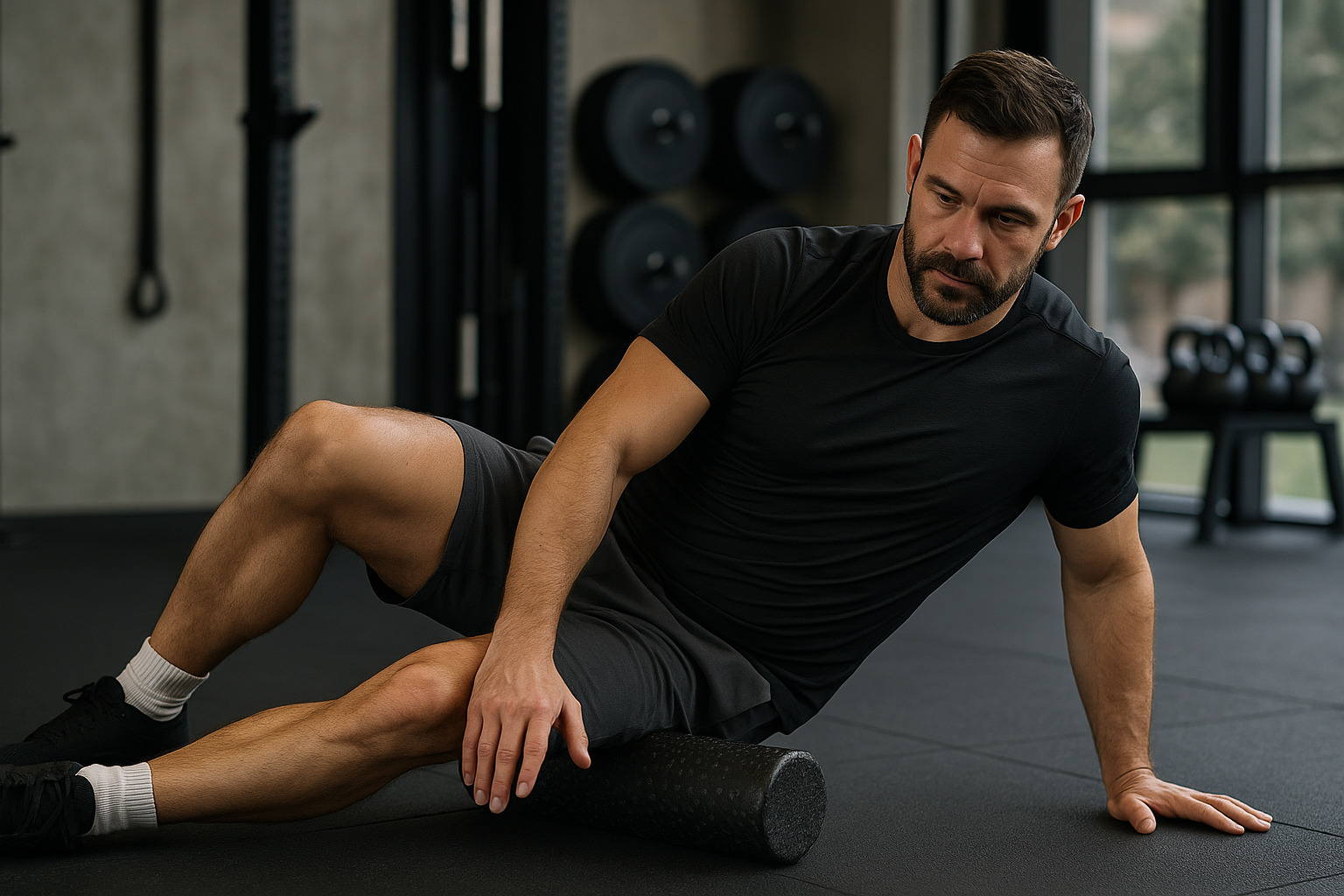
Muscle tightness doesn’t always require a massage therapist or complex equipment. Foam rolling, also known as self-myofascial release, is a straightforward way to reduce soreness, improve mobility, and aid recovery. Whether you’re hitting the gym or training at home, this technique can play a key role in how your body performs and recovers.
What Is Foam Rolling?
Foam rolling involves applying pressure to specific points on your body to help muscles recover and return to normal function. This function means elasticity, mobility, and the ability to contract properly. The tool—a dense foam cylinder—is simple, but the effect can be deep and wide-ranging.
Why Foam Rolling Works
Muscles are wrapped in fascia, a layer of connective tissue that can become stiff or knotted due to overuse, stress, or poor movement habits. Foam rolling breaks up these knots, increasing blood flow and reducing tension. Without proper tissue recovery, performance stalls and injuries creep in.
Key Benefits of Foam Rolling
- Reduces Muscle Soreness: Rolling helps flush metabolic waste and brings in fresh oxygen and nutrients.
- Improves Range of Motion: Targeted rolling can loosen tight fascia, allowing better joint mobility.
- Supports Injury Prevention: Less tension means fewer strains and better form during workouts.
- Speeds Up Recovery: Used post-workout, it reduces downtime and keeps you consistent.
- Relieves Trigger Points: Direct pressure on knots reduces localized pain and improves muscle activation.
When to Foam Roll
Timing affects outcome. Use foam rolling:
- Before a workout to warm up muscles and increase blood flow.
- After training to reduce tightness and support recovery.
- On rest days to maintain mobility and address lingering soreness.
How to Foam Roll Correctly
Doing it wrong can be ineffective or painful. Stick to these basics:
- Move Slowly: One inch per second is enough. Rushing defeats the purpose.
- Breathe Through It: Don’t hold your breath. Deep breathing helps muscles release.
- Avoid Bone or Joints: Only target soft tissue. Rolling bone adds stress without benefit.
- Pause on Tight Spots: Spend 20–30 seconds on knots to reduce tension.
- Use Good Posture: Maintain alignment to avoid straining other areas.
- Keep Sessions Short: 10–15 minutes is enough for full-body work.
Muscle Groups to Focus On
Here’s where most tension builds, especially after strength sessions like those structured at UP:
1. Calves
- Sit with one leg on the roller.
- Roll from ankle to just below the knee.
- Cross your free leg over for more pressure.
2. Hamstrings
- Sit on the floor, roller under your thigh.
- Roll from just above the knee to below your glute.
- Control pressure using your arms.
3. Quads
- Lie face down, roller beneath your thighs.
- Use forearms for support.
- Roll from hip to knee in sections.
4. IT Band
- Lie on your side, roller under the outside of your thigh.
- This one hurts, but it’s common for runners and lifters.
- Stay between hip and knee without rolling over joints.
5. Glutes
- Sit on the roller, lean to one side.
- Roll across one glute at a time.
- Helps release deep hip tightness.
6. Upper Back
- Lie on your back, roller beneath shoulder blades.
- Cross arms in front to spread your shoulder blades.
- Roll to mid-back. Avoid the lower spine.
What Foam Roller Should You Use?
Different rollers yield different results:
- Soft Rollers: Good for beginners or sore muscles.
- Firm Rollers: Better for deep tissue release.
- Textured Rollers: Provide targeted pressure but can feel intense.
- Vibrating Rollers: Combine pressure and motion for added stimulation.
If you’re unsure, trainers can guide you on which tool suits your training and recovery plan.
How Often Should You Foam Roll?
Aim for 3–5 times per week. Daily sessions are safe if done correctly. Consistency matters more than duration. A few focused minutes before or after a workout beats an occasional marathon session.
Mistakes to Avoid
- Rolling too fast: You miss the therapeutic effect.
- Applying too much pressure: Bruising isn’t proof of effectiveness.
- Ignoring pain signals: Sharp or tingling pain is a sign to stop.
- Using poor form: Can lead to new imbalances.
- Rolling over joints: Can irritate tissue and stress the joint capsule.
Signs You Need Foam Rolling
- Tightness that limits movement.
- Muscles that feel dense or “ropey.”
- Soreness that lingers more than 48 hours.
- Reduced performance despite consistent training.
These are cues your body isn’t bouncing back properly. Add foam rolling to your recovery routine, just like hydration, sleep, and nutrient timing.
Integrating Foam Rolling into Your Fitness Plan
At facilities or gyms every detail counts. Clients are coached to take recovery as seriously as sets and reps. Foam rolling, along with proper nutrition and structured programming, supports a well-rounded strategy for sustained progress.
Your muscles are your tools. Keeping them supple, responsive, and pain-free isn’t optional—it’s part of the process. Foam rolling won’t fix poor posture or replace training, but it will help you train better and recover smarter.
TL;DR:
Foam rolling is pressure-based self-massage. It targets soft tissue to reduce soreness, increase mobility, and prevent injury. Keep it slow, breathe, avoid bones, and focus on tight areas. It’s not fancy, but it’s effective.